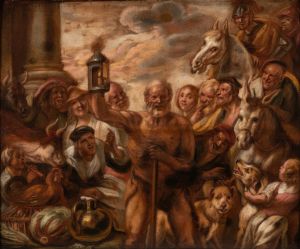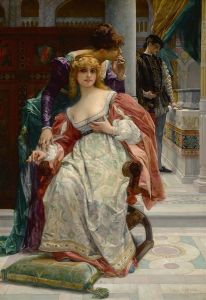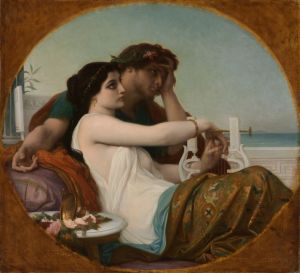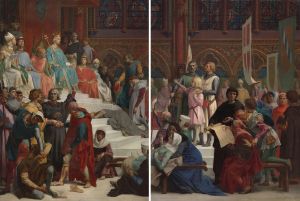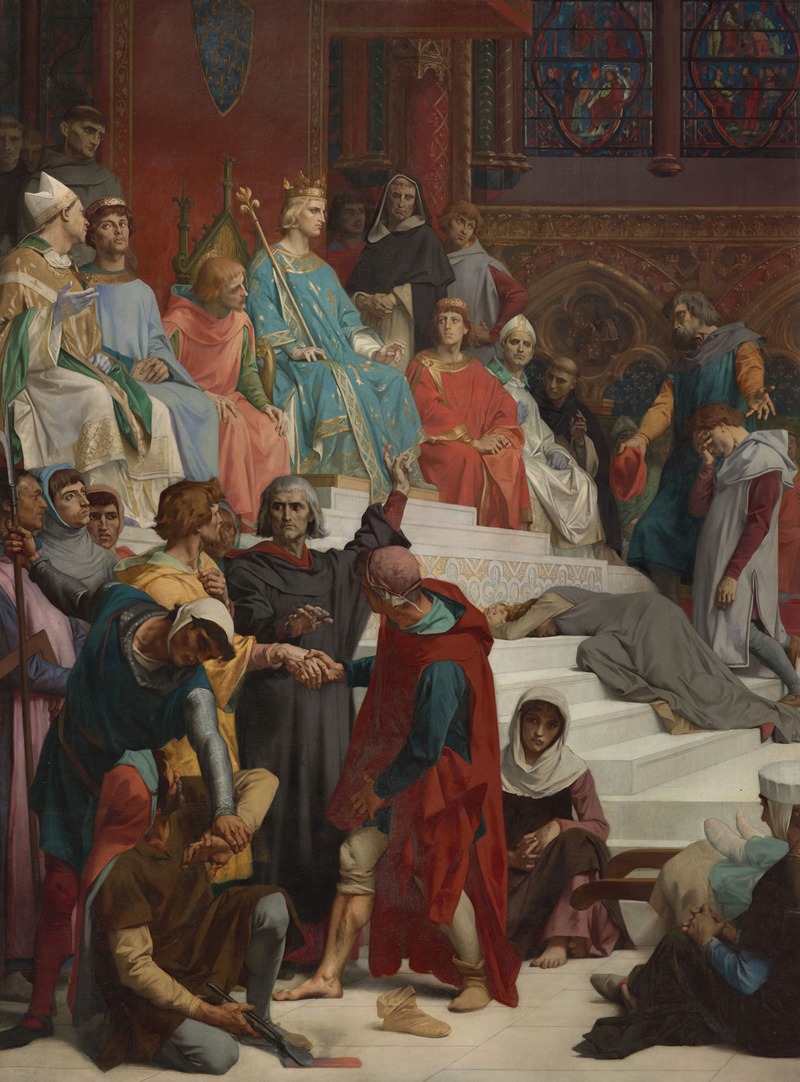
Saint Louis rendant la justice
A hand-painted replica of Alexandre Cabanel’s masterpiece Saint Louis rendant la justice, meticulously crafted by professional artists to capture the true essence of the original. Each piece is created with museum-quality canvas and rare mineral pigments, carefully painted by experienced artists with delicate brushstrokes and rich, layered colors to perfectly recreate the texture of the original artwork. Unlike machine-printed reproductions, this hand-painted version brings the painting to life, infused with the artist’s emotions and skill in every stroke. Whether for personal collection or home decoration, it instantly elevates the artistic atmosphere of any space.
Saint Louis rendant la justice (English: Saint Louis Rendering Justice) is a painting by the French academic artist Alexandre Cabanel. Completed in 1848, this work is one of Cabanel's early masterpieces and reflects his skill in historical and religious themes, which were highly valued in 19th-century academic art. The painting was created during Cabanel's formative years, shortly after he entered the École des Beaux-Arts in Paris and began to establish himself as a prominent figure in the French art world.
The painting depicts King Louis IX of France, later canonized as Saint Louis, in the act of dispensing justice. Louis IX, who reigned from 1226 to 1270, was renowned for his piety, fairness, and dedication to justice, qualities that contributed to his sainthood in 1297. In this work, Cabanel portrays the king seated under a tree, symbolizing the legendary accounts of Louis IX holding court and resolving disputes in the open air, often beneath an oak tree in Vincennes. This imagery aligns with the historical and literary tradition that emphasizes the king's accessibility and moral integrity.
Cabanel's composition is characterized by its attention to detail and the idealized portrayal of the figures, hallmarks of the academic style. The king is depicted with a serene and authoritative demeanor, emphasizing his role as a just and divinely inspired ruler. The surrounding figures, including petitioners and attendants, are rendered with meticulous care, showcasing Cabanel's ability to convey emotion and narrative through gesture and expression. The use of light and color enhances the solemn and reverent atmosphere of the scene, underscoring the moral and spiritual significance of the subject.
The painting was well-received upon its completion and contributed to Cabanel's growing reputation as a skilled painter of historical and religious subjects. It reflects the 19th-century French fascination with medieval history and the idealization of monarchs like Louis IX, who were seen as embodiments of virtue and justice. This theme resonated with the cultural and political climate of the time, as France grappled with questions of governance, morality, and national identity.
Today, Saint Louis rendant la justice is recognized as an important example of Cabanel's early work and his contribution to the academic art tradition. The painting is housed in the Musée Fabre in Montpellier, France, which holds a significant collection of Cabanel's works, as the artist was a native of the city.





